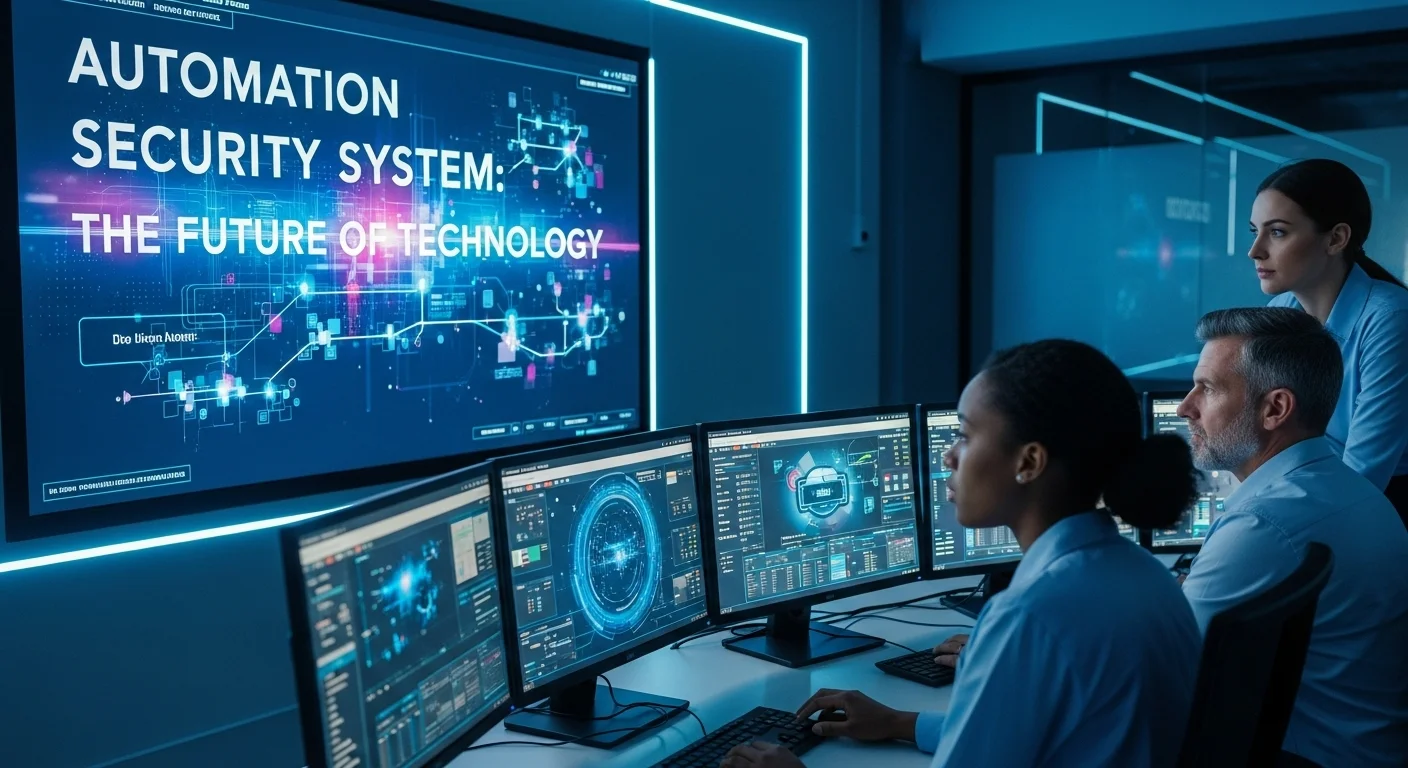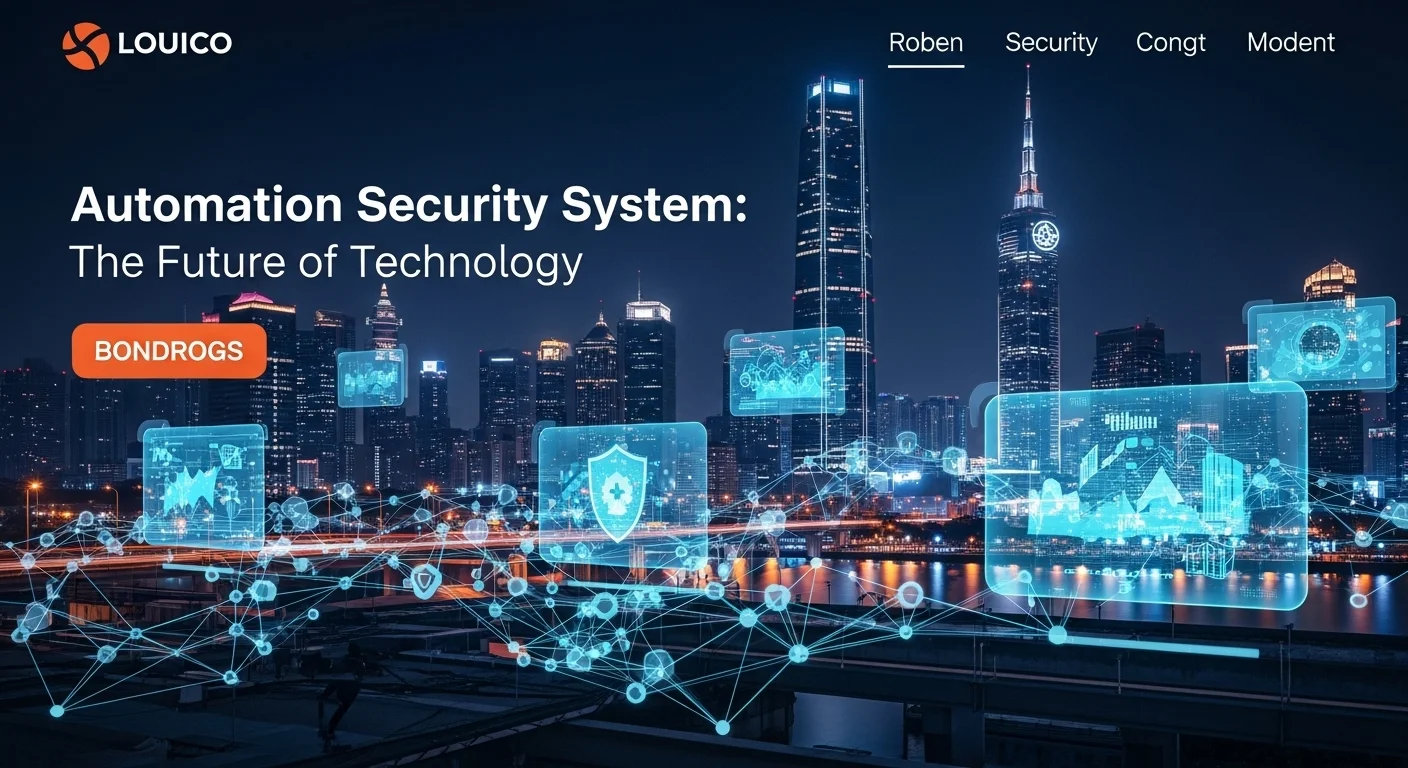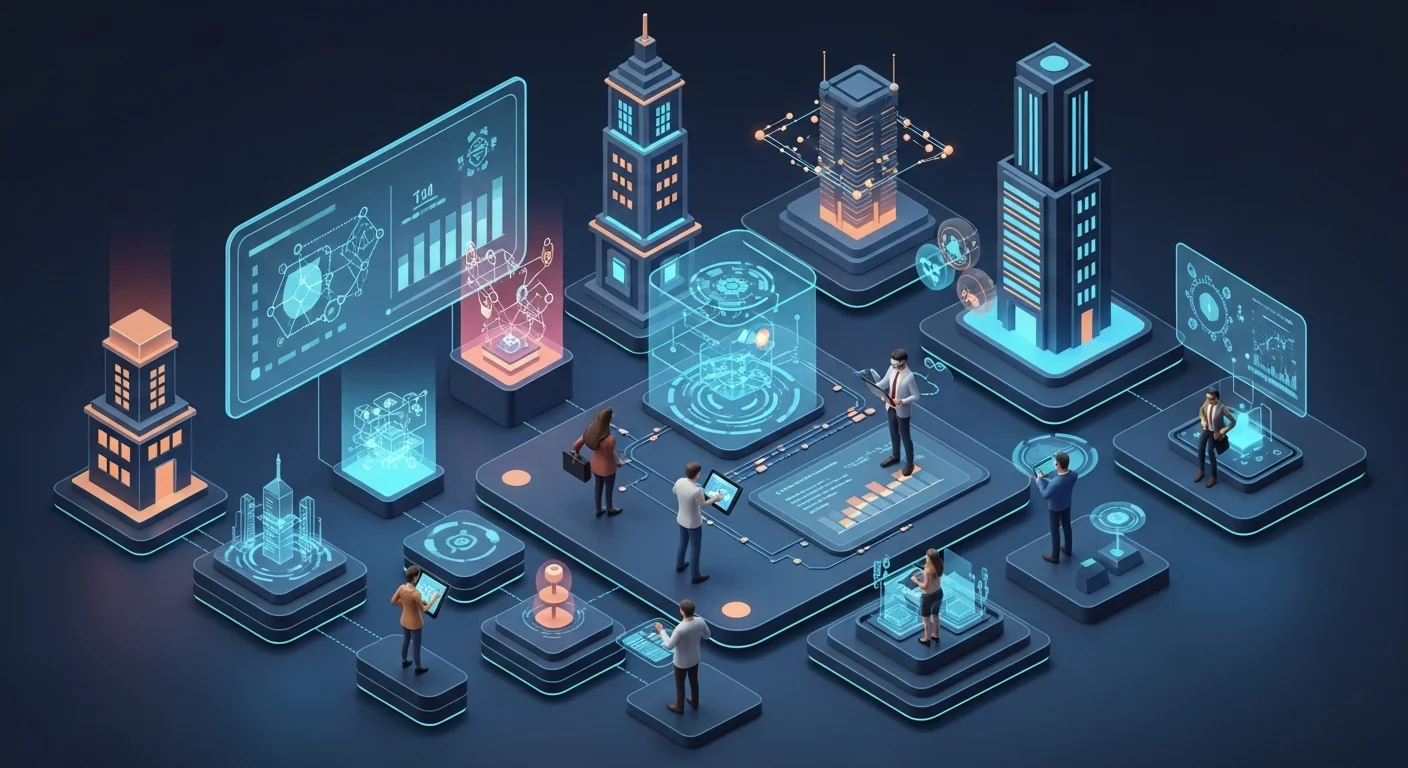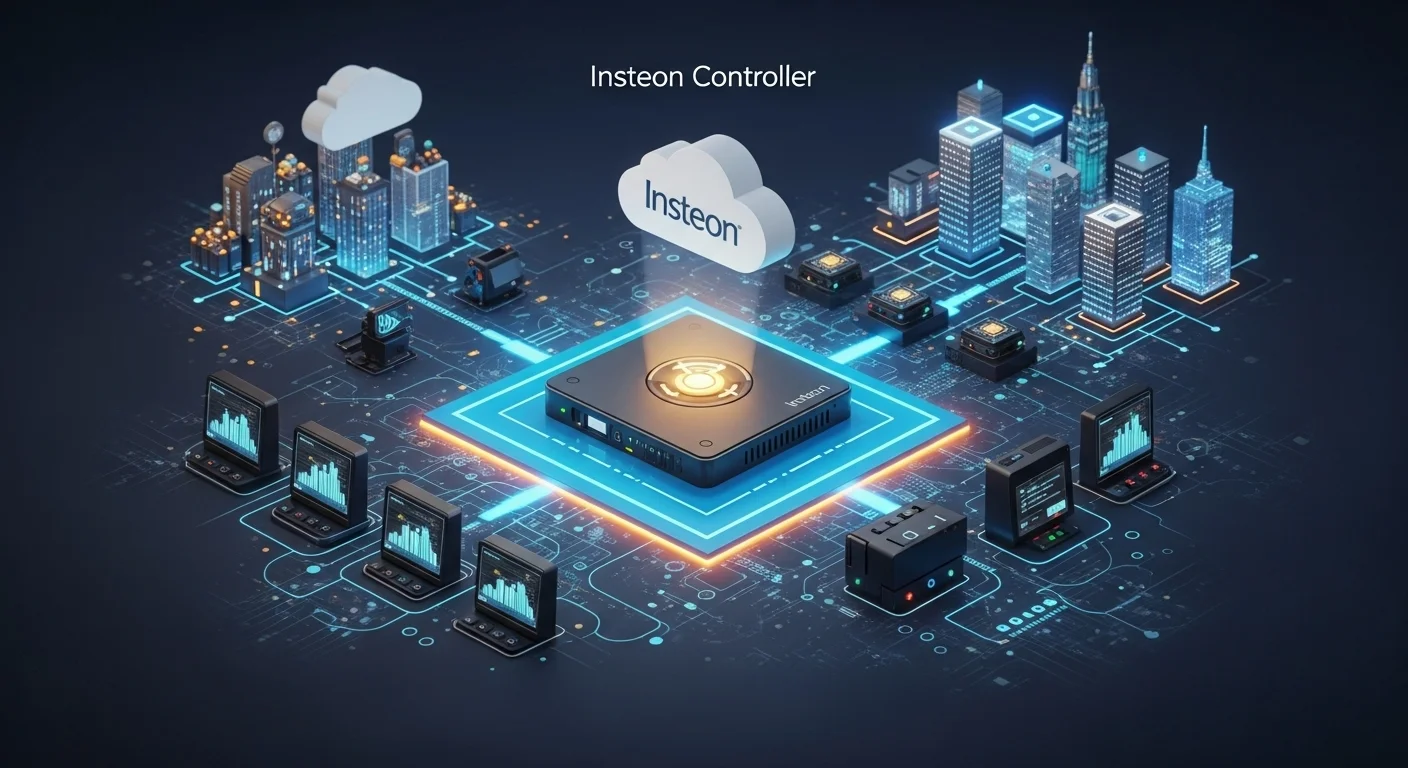Automated Security Systems: A Real-World Guide for Your Business and Home

Executive Summary
In a world of ever-smarter digital threats, it often feels like we're always one step behind. An Automated Security System changes that. I've seen it firsthand: this isn't just about adding more locks; it's about making your security intelligent. This article breaks down what an automation security system truly is, moving us past the old, manual ways of watching over our digital and physical worlds. We'll explore why this technology is a game-changer for businesses trying to protect complex networks and for anyone wanting to create a genuinely smart and safe home. Think of it as upgrading from a passive security guard to an active, intelligent defender that works 24/7. We'll look at everything from the core concepts to real-life applications, including integrated platforms like the Omni automation security system, to show you why automated protection is no longer a luxury—it's a necessity.
Table of Contents
Table of Contents
- What is an Automation Security System?
- Why Is Automated Security So Important?
- The Key Components: A Look Under the Hood
- How Businesses Benefit: Securing the Future
What is an Automation Security System?
I've been in the cybersecurity world for over a decade, and the biggest shift I've seen isn't just the threats we face, but how we fight them. We've moved beyond simple antivirus programs into an era where attacks are automated and lightning-fast. To keep up, our defenses had to get smarter. That's where the automation security system comes in. This isn't just another piece of software; it's a new philosophy. At its heart, an automation security system uses powerful tech like artificial intelligence (AI) and machine learning (ML) to watch over, detect, and respond to threats automatically, with very little need for a human to step in. In a world where thousands of security alerts can happen every minute, this is the only way to stay ahead.
Why Is Automated Security So Important?
The need for this technology is massive. For businesses, the places they can be attacked have exploded. Think about it: you have your main office servers, cloud platforms, countless Internet of Things (IoT) gadgets, and employees working from everywhere. Trying to manually secure all of that is like trying to plug a thousand leaks with ten fingers. An automation security system brings the speed and scale needed to protect this complex web. It can sift through mountains of data in real time, spot weird patterns that signal an attack, and instantly take action—like isolating a hacked laptop or blocking a suspicious connection. The results? Faster response times, fewer human errors, and it frees up security experts to focus on the bigger picture, like hunting for new threats.
This same idea is now protecting our homes through the smart home automation and security system. The scale is smaller, but the principle is identical. These systems link your cameras, door locks, sensors, and alarms into one smart network. So, if a window sensor is tripped in the middle of the night, the system doesn't just beep. An automated home security system can be set to turn on every light, lock every door, sound a siren, and start recording video. This active, layered response is far better at scaring off an intruder than a simple alarm. It turns your house into an environment that actively defends itself. A great example of this is an omni automation security system, which ties security in with your lights, thermostat, and even your music, creating a unified smart home where everything works together to keep you safe.
The Key Components: A Look Under the Hood
To really get why these systems are so powerful, it helps to know what they're made of. They're a clever mix of hardware and software working together.
- Sensors and Data Collectors: These are the system's eyes and ears. In a business, it's everything from network traffic monitors and software on laptops to security cameras. In a home automation and security system, it’s your door/window contacts, motion detectors, glass-break sensors, and smart cameras.
- The 'Brain' or Control Hub: All the data from the sensors goes here to be processed. In big companies, this is usually a Security Information and Event Management (SIEM) platform combined with a Security Orchestration, Automation, and Response (SOAR) tool. For a smart home, the 'brain' is the central hub (like Apple HomeKit or Samsung SmartThings) that connects all your devices and runs your automation rules.
- AI and Machine Learning: This is the secret sauce. Instead of just following basic 'if this, then that' rules, modern systems learn what 'normal' looks like for your network or home. By knowing what's normal, it can spot tiny, suspicious changes that might be a new kind of attack, moving security from being reactive to proactive.
- Automated Responders: This is the action part. Once a threat is confirmed, the system acts. For a business, it might be an automatic command to a firewall to block traffic. For automated home security systems, this means activating sirens, flashing lights, and sending alerts to your phone.
How Businesses Benefit: Securing the Future
For a business, using an automation security system is transformative. It solves some of the biggest headaches for security leaders today. One of the main uses is in finding and stopping threats fast. A ransomware attack can spread through a network in minutes. An automated system can spot the first signs, isolate the infected computers, and stop the attack before a human analyst has even had their morning coffee. That speed is the difference between a small problem and a company-wide disaster.
Another huge benefit is in managing security updates. Companies have thousands of computers and servers, and new weaknesses are found every day. An automation security system can constantly scan for these weaknesses, figure out which are the most dangerous, and automatically apply fixes or other protections. This closes the door on attackers and makes the whole organization safer.
These systems are also vital for securing the cloud. When companies move to the cloud, they face new risks, like accidentally leaving sensitive data public. Automated tools can constantly watch these cloud environments, find misconfigurations, and fix them on the spot. An automation security system isn't just a tech upgrade; it allows a business to grow and innovate confidently, knowing a tireless, intelligent guard is always on duty.

How to Build Your Automated Security System: A Practical Guide
Putting an effective automation security system in place is a crucial move for any modern business and a fascinating project for any tech enthusiast. This guide walks you through the technical methods, business strategies, and tools available, whether you're securing a global enterprise or setting up a sophisticated smart home automation and security system. The core ideas of assessing your needs, integrating tools, and always improving are the same.
Technical Methods and Core Platforms
Enterprise security automation relies on a few key technologies working together. Understanding them is your first step.
- Security Information and Event Management (SIEM): Think of a SIEM as the head detective. It gathers clues (logs and event data) from all over your network—firewalls, servers, computers, everything. Its job is to piece all this information together to spot suspicious activity that might signal a threat.
- Security Orchestration, Automation, and Response (SOAR): If the SIEM is the detective, the SOAR platform is the SWAT team. It takes the alerts from the SIEM and automatically launches a response plan, or 'playbook'. For example, if a phishing email is detected, a SOAR playbook can instantly analyze it, find other similar emails, delete them from everyone's inbox, and block the sender, all in a matter of seconds. This is the real power of an automation security system.
- Endpoint Detection and Response (EDR) / Extended Detection and Response (XDR): EDR tools are like security guards for each individual computer and server. XDR takes it a step further by pulling in data from the network, cloud, and email to get a bigger picture of an attack. These tools can automatically do things like quarantine a hacked laptop to stop a threat from spreading.
- APIs (The Glue): Application Programming Interfaces, or APIs, are what let all these different systems talk to each other. A great automation security system is really an ecosystem of tools all connected and communicating through APIs to work as a team.
Business Strategy for a Successful Rollout
Having the right tech is only half the story. Success depends on a smart business strategy.
- Step 1: Know Your Weak Spots: Before you automate, you have to know what you're protecting and what the biggest threats are. I've seen many companies buy a shiny new tool without this first step, and it never ends well. Figure out your biggest risks and start by automating the responses to the most common and time-consuming incidents. Quick wins build momentum.
- Step 2: Map Out Your Processes: You can't automate chaos. Write down exactly how you respond to incidents now. This simple exercise will almost always show you ways to improve your process, even before you add automation.
- Step 3: Pick the Right Tools for You: The market is full of options. Look beyond just the features. Is it easy to use? Does it connect with the other tools you already have? For a home user, this means choosing an ecosystem for your automated home security system, like Apple HomeKit or Google Home. The idea of a single, integrated omni automation security system shows the value of having one platform that does it all, rather than a messy collection of separate products.
- Step 4: Start Small, Then Grow: Don't try to automate everything on day one. Begin with simple tasks, like having the system automatically gather more information about a security alert for a human analyst to review. As you get more comfortable, you can move to fully automated actions.
- Step 5: Build a Collaborative Culture: Security automation isn't just for the security team. You'll need to work closely with IT, networking, and other departments to build effective response plans and get the permissions needed for the system to do its job.
Comparisons and Resources
When choosing a solution, you'll often decide between running it on your own servers (on-premise) or using a cloud-based service (SaaS). For most businesses today, a cloud or hybrid solution offers the best mix of power and convenience. For those building a home automation and security system, the choice is often between a DIY setup (like with a Home Assistant hub) and a professional service (like ADT). DIY offers ultimate customization, while professional services offer convenience and 24/7 monitoring. As technology evolves, new standards like Matter are making it easier for all these devices to work together, blurring the lines between these approaches.

Pro Tips to Master Your Automated Security System
Whether you're a security chief protecting a global company or a homeowner making your space safer, getting the most out of an automation security system is about smart strategy, not just technology. It's about a commitment to getting better over time. Here are some practical tips and insights to elevate your experience, from the corporate level right down to your personal smart home automation and security system.
Best Practices for Powerful Automation
Follow these best practices to maximize the benefits and avoid common pitfalls.
- Embrace a 'Zero Trust' Mindset: The core idea of Zero Trust is simple: 'never trust, always verify.' Assume a threat could come from anywhere. An automation security system is the perfect engine for this. You can automate checks for every single access request. When someone tries to open a sensitive file, an automated workflow can instantly verify their identity, check their device's security, and confirm their location before granting access.
- Automate Your Patching and Configuration: One of the most boring but critical security tasks is keeping systems updated. Automation is the only way to do it right. Use tools to automatically find and fix missing patches and bad configurations. From my experience, this single practice wipes out the vast majority of vulnerabilities that attackers love to exploit.
- Use 'Human in the Loop' Workflows: Letting a system take critical actions automatically can be scary. A 'human in the loop' setup is the perfect middle ground. The system does all the heavy lifting—gathering data, analyzing it—and then presents a recommendation to a human expert for the final go-ahead. This gives you the speed of automation with the safety of human judgment.
- Monitor Your Automation: Your automation system is a powerful tool, and it needs to be watched. Keep logs of every action it takes. Set up alerts for any time an automation fails. Regularly review your plans to make sure they still make sense. An unwatched automation system can become a liability.
- Test Your Response Plans Regularly: An untested plan is just a good idea. You have to run drills. Use simulated attacks to make sure your automated responses work as expected. You'll always find small issues to fix before a real crisis hits. This is true for automated home security systems too—test your alarms and alerts every few months.
Essential Tools and Real-World Experiences
Beyond the core platforms, other tools can boost your automation. Cloud Security Posture Management (CSPM) tools are a must for any business using the cloud, as they automate the hunt for security mistakes. A powerful Identity and Access Management (IAM) platform is also key, as it can automatically give new employees the access they need and, more importantly, instantly revoke it when they leave.
I once worked with a large bank whose security team was drowning in over 10,000 alerts a day. They were burnt out. After bringing in an automation security system, they were able to have it automatically handle 95% of those alerts. The system cleared the noise and presented the team with only the 50-100 truly suspicious events each day. It was a complete game-changer for their effectiveness and morale.
For the home user, the experience is about that feeling of magic and security. Imagine leaving your house, and as you drive away, your phone triggers an 'Away' scene that arms the security system, locks the doors, and turns down the heat. Or if a leak is detected, the system automatically shuts off the water main. This is the kind of intelligent living that a truly integrated system, like an omni automation security system, provides.
Resources and the Road Ahead
To keep up in this field, you have to keep learning. A fantastic resource I always recommend is the SANS Institute. Their website is a goldmine of research and training on security automation. Following industry news is also key to staying ahead of new threats and tech.
The future of the automation security system is tied directly to AI. We're heading toward predictive security, where AI can spot an attack before it even starts. As our world gets more complex with things like quantum computing and the metaverse, automation will be the only way to secure it. For all of us, investing time to understand security automation is an investment in a safer future.
Expert Reviews & Testimonials
Sarah Johnson, Business Owner ⭐⭐⭐
As a small business owner, I found this a good starting point. I'd love to see more real-world case studies for businesses my size, but the core info is solid.
Mike Chen, IT Consultant ⭐⭐⭐⭐
This was a really helpful overview. As an IT consultant, I appreciated the breakdown of SIEM and SOAR. A few of the technical bits could be a touch simpler for beginners, but it's a great resource.
Emma Davis, Tech Expert ⭐⭐⭐⭐⭐
Absolutely fantastic article! I'm specializing in cybersecurity, and this piece connected all the dots for me. It’s comprehensive, clear, and spot-on. Highly recommended.



